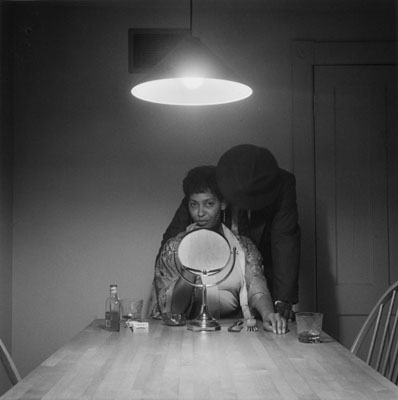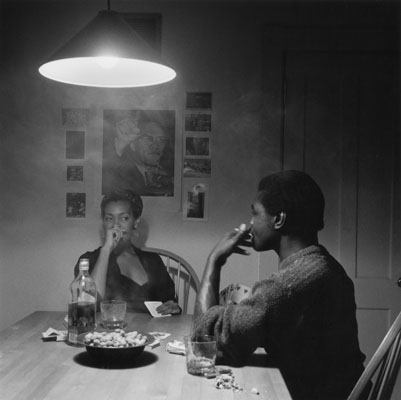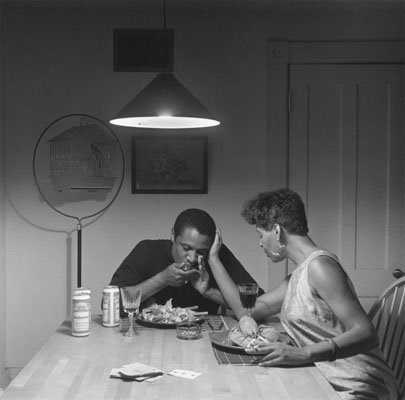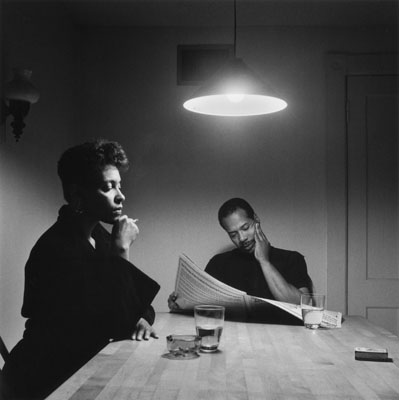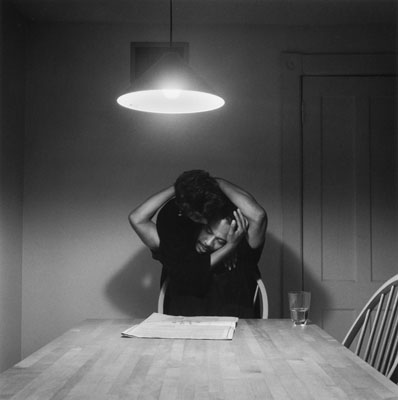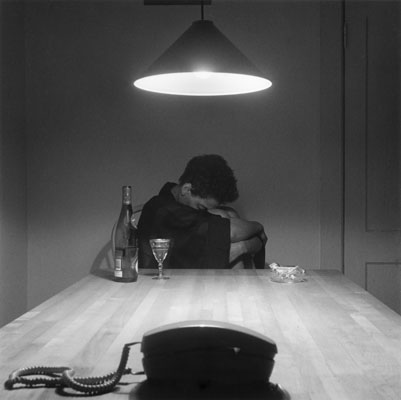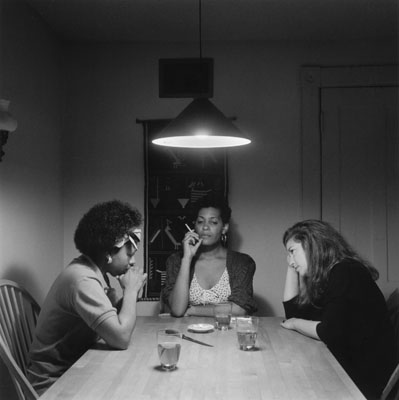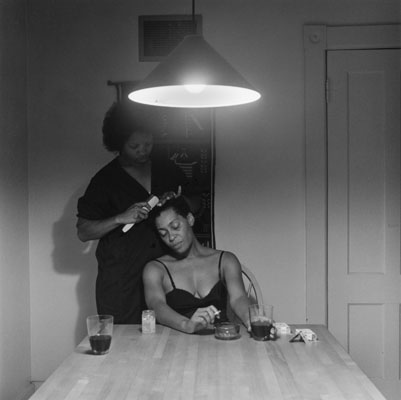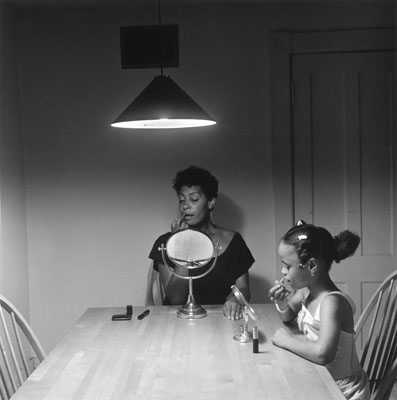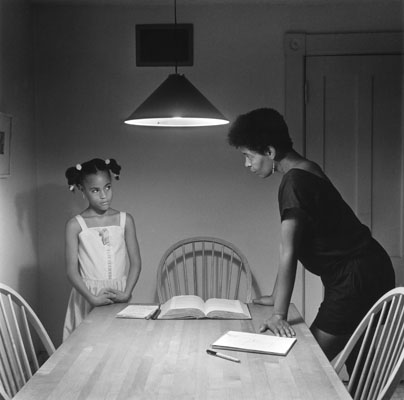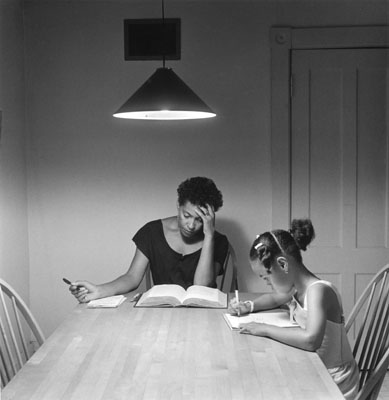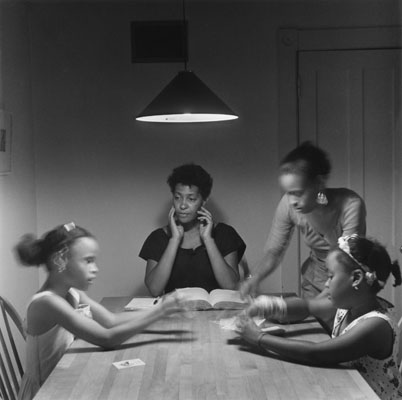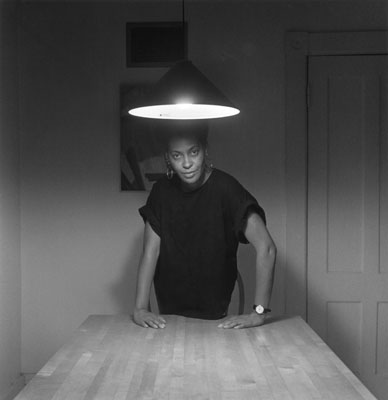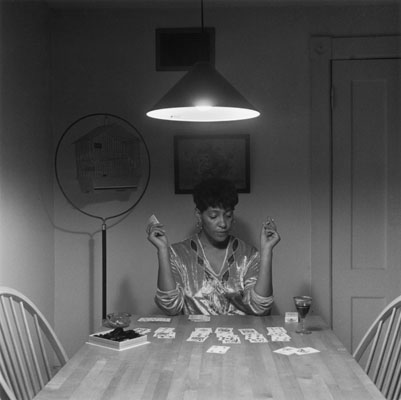ARTIST’S LIFE-
Born in 1953, Carrie Mae Weems is an American photographer who mainly focuses on the issues facing African-Americans in society (like sexism, racism and struggle with own personal identity) but also deals with presenting the complexity of the human experience. Her work has been exhibited over 50 times around the world.
“Let me say that my primary concern in art, as in politics, is with the status and place of Afro-Americans in the country.”
-Carrie Mae Weems, 2007
She was born in Oregon into a large family, being one of seven children, and had a child of her own at a very early age before moving across the States to California to study dance. While still in her early twenties, she became more politically active and got involved in the labour movement, and she completed her first photographic series in 1983 about the experience of her family and the movement of black families from the South to the North of the U.S.
“…from the very beginning, I’ve been interested in the idea of power and the consequences of power; relationships are made and articulated through power. Another thing that’s interesting about the early work is that even though I’ve been engaged in the idea of autobiography, other ideas have been more important: the role of narrative, the social levels of humor, the deconstruction of documentary, the construction of history, the use of text, storytelling, performance, and the role of memory….”
-Carrie Mae Weems, 2011
She has won at least 18 awards for her work over the years and has 8 publications to her name, including the one showcased below, called “A Kitchen Series” .
IMAGE ANALYSIS–

I chose this image out of the whole series because I fell it stands out more symbolically. The series tells the story of a woman’s life as she falls in love with a man, they separate, and her life with her child and her friends around her, but this image is one of the few where Carrie Mae Weems is alone at the table. Her pose is very striking and bold, and it appears as though she has regained her power and sense of self again. The direct eye contact with the camera is daring and almost challenging, portraying the idea that she is whole and independent without the need for anyone else, that she has become her full self and has gone through a personal change that left her as strong and bold as her stance suggests. she is also standing up, in contrast to the majority of the rest of the series where she and the other participants were seated at the table; this also seems to represent her independence and freedom from her past. Visually, the image is quite pleasing as the bright white light above makes her face stand out against the grey background and her black clothing, so her expression and emotion is very clear. The table in the foreground of the image leads the eye into the centre-background, where she is standing, and adds some structure and symmetry to the whole photograph, which in itself is fairly simple and relies mainly on the context of the rest of the series to be as striking as it is.

